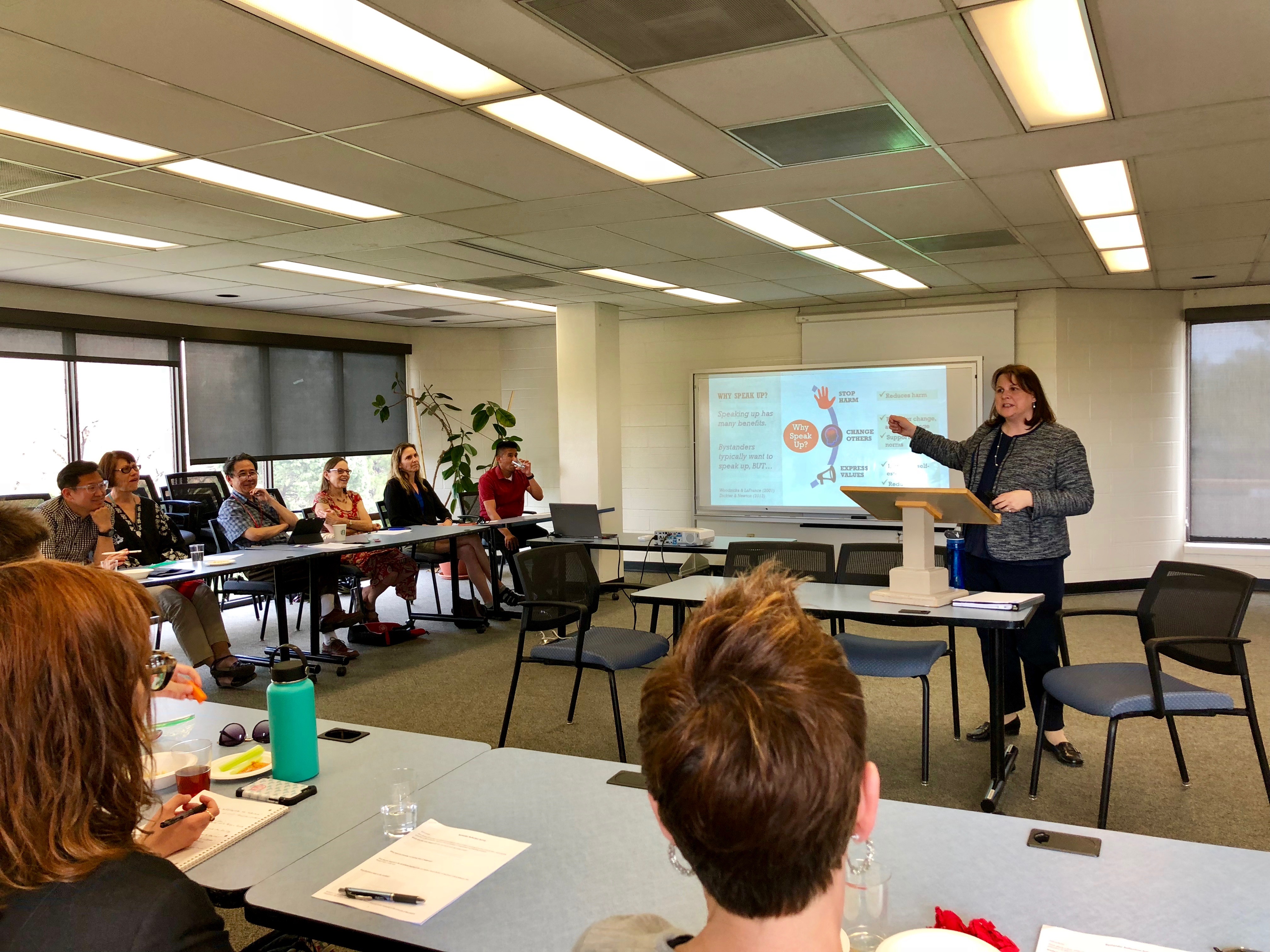Faculty bystander workshop teaches strategies to respond to harassment
Faculty who experience inappropriate, biased or harassing comments from co-workers have five strategies for responding, according to Stephanie Goodwin, the director of faculty leadership and development at Wright State University.
Goodwin taught the strategies, which can include disagreeing and questioning, at three workshops hosted by Advance UNM in April, including about 75 faculty and administration leaders including department chairs.
Her presentation, called “Speaking Up To Bias: What’s a Bystander to Do?” gave attendees the tools to properly respond to incidents of bias.
The first way to respond to bias is with a question or interruption, Goodwin said.
An example would be to ask “what did you mean by…?” Additionally, one can remind people of their better selves by arousing dissonance and saying something like ”I’m surprised to hear you say that. You’ve always supported equity and this doesn’t sound like you at all to me.”
A bystander can disagree and “leave space for grace,” Goodwin said. An example of disagreement would be “Do you mean just her, or all women?” Someone can pivot away from the biased statement by saying “have you met…” Finally, someone can express their emotions and say “I’m really uncomfortable/disappointed/surprised by this comment. ”A bystander can also use nonverbal cues like facial expressions to express their feelings.
Goodwin first emphasized that she cannot tell people when to interfere or how to interfere during a specific situation. Deciding when to speak up is a personal choice based on a moral compass.
“I’m not going to say every time you see something, speak up,” Goodwin said.
Goodwin defines biases as thoughts, feelings and actions based on perceived group identities, including gender, race, sex, ethnicity, age and sexuality. In many instances, people encounter implicit — or as Goodwin prefers to call them, unintended biases — in everyday life. Such biases can have a huge effect on a person’s life.
“Subtle biases deplete the satisfaction we experience,” Goodwin said.
Biases tend to come out in social cues like smiling and eye contact. They often happen to “leak out,” Goodwin said.
Bystanders often have have three main motivations to interfere: stop the harm, change others, and express values. When a person does speak up and interfere, Goodwin said that it can lead to increased self esteem, decreased rumination about the incident, and a number of other things.

Sometimes a person wants to say something, but does not. This can be explained by Goodwin’s CPR Model. The bystander assesses if the incident is urgent, if they are responsible, what they can do, and what the cost of intervening would be. If the bystander deems the incident to be not urgent, for example, the bystander might not intervene. However, it is often the cost that is the biggest factor.
“What looms large is potential cost,” Goodwin said.
Sometimes it can be best to respond to a situation at a later time. Additionally, higher-ranking people should set the standards for how people respond.
“Norms follow power,” Goodwin said.
Goodwin also recommended “confronting thyself” and practicing self-confrontation to create a role model for others to look to.
“When we model for other people…we create the space to get this work done.”

